Premium Only Content
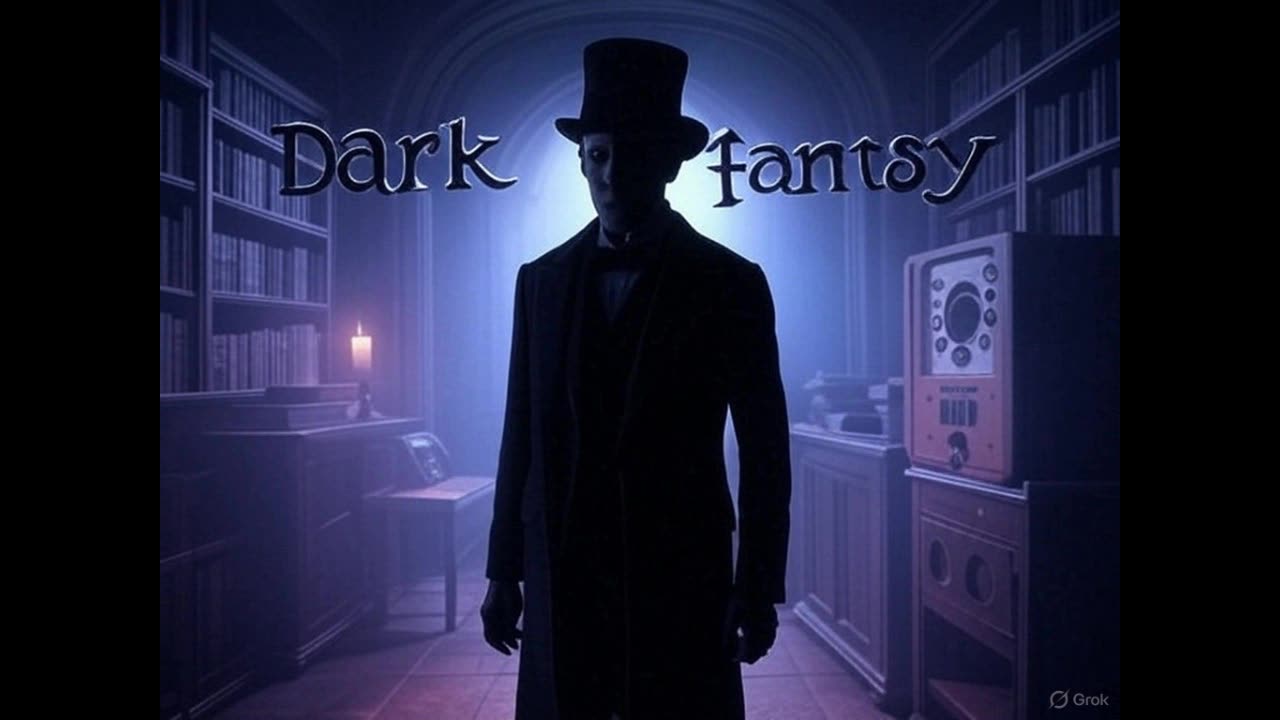
Dark Fantasy: The Letter from Yesterday (May 1, 1942)
Setting: A contemporary (1942) American setting, likely a small town or urban apartment, with scenes shifting to a mysterious or ghostly past, possibly evoked through a dusty attic, an old house, or a supernatural void. The episode employs sound effects such as creaking floorboards, rustling paper, ghostly whispers, and howling winds to create a haunting, time-disrupted atmosphere, characteristic of Dark Fantasy’s atmospheric storytelling.
Plot:
Introduction: The episode opens with the show’s ominous theme music and announcer Tom Paxton (or possibly Keith Payton, as sources vary) introducing Dark Fantasy as a series of “tales of the weird and supernatural.” The narrator sets the stage for a story about a letter from the past, hinting at a mysterious connection between the present and a bygone era, stirring unease about time’s boundaries.
The Premise: The story likely centers on a protagonist—perhaps an ordinary person, a curious writer, or a skeptical investigator—who discovers an old letter that appears to come from “yesterday,” but is inexplicably tied to a distant past, possibly decades or centuries earlier. The letter might be found in a forgotten trunk, delivered under strange circumstances, or written in a hand that matches someone long dead. Bishop’s scripts often weave time-travel or supernatural elements, so the letter could serve as a portal, curse, or warning, linking the protagonist to a tragic historical event, a ghostly presence, or an unresolved mystery.
Escalating Horror: As the protagonist investigates the letter’s origins, supernatural events unfold. They might experience visions of the past, hear voices from another time, or encounter a ghostly figure tied to the letter’s author—a lost lover, a betrayed friend, or a vengeful spirit. The narrative could involve the protagonist being pulled into the past, either mentally or physically, with sound effects like ticking clocks, distorted echoes, or sudden silences amplifying the disorienting shift. The letter’s message might reveal a dire prophecy, a plea for help, or a demand for justice, threatening the protagonist’s safety or sanity.
Climax and Resolution: The climax likely involves a confrontation with the supernatural force behind the letter, possibly requiring the protagonist to resolve the past’s tragedy—such as righting a wrong, breaking a curse, or freeing a trapped soul. Bishop’s stories often feature a twist or ambiguous ending, so the protagonist might succeed but remain haunted by the experience, find the letter reappearing in the present, or become trapped in the past themselves. The episode concludes with the narrator reflecting on the fragility of time and the persistence of the past, leaving listeners with “goose pimples” as Bishop intended.
Themes: The intersection of past and present, the haunting power of unresolved history, and the human struggle against supernatural forces. The episode reflects Dark Fantasy’s blend of horror, mystery, and speculative fiction, designed to spark listeners’ imaginations.
Cast and Roles:
Protagonist: Played by an unnamed actor, likely Ben Morris or Fred Wayne, portraying a relatable character grappling with the letter’s mystery. The performance would convey curiosity, fear, and resolve, with vocal shifts to reflect supernatural encounters, typical of Dark Fantasy’s intense acting style.
Supporting Characters: An ensemble of unnamed actors, possibly including Eleanor Naylor Caughron, Garland Moss, or Murillo Scofield, playing roles such as:
Ghostly Figure/Author of the Letter: A spectral or historical character, voiced with an eerie or melancholic tone, embodying the past’s lingering presence.
Family/Friends: Characters reacting to the protagonist’s obsession with the letter, offering skepticism or concern, adding emotional stakes.
Minor Roles: A librarian, an antique dealer, or a town historian, voiced by the ensemble to provide context or warnings about the letter’s origins.
Narrator/Announcer: Likely Tom Paxton (or Keith Payton), delivering the opening and closing remarks with a somber, suspenseful tone, framing the story’s eerie mood.
Note on Cast: Dark Fantasy relied on a skilled in-house cast from WKY, with actors like Ben Morris and Eleanor Naylor Caughron known for their versatility. Specific roles for “The Letter from Yesterday” are unlisted, as the series rarely credited individual performances, but the ensemble’s talent ensured a compelling delivery.
Production Details:
Music: Ominous orchestral or organ music, likely composed by WKY’s in-house musicians, opens and closes the episode, with eerie stings accentuating suspenseful moments. The score enhances the time-bending, supernatural mood, akin to Lights Out!’s atmospheric style.
Writer: Scott Bishop (George M. Hamaker), known for crafting tales that merge supernatural horror with speculative elements, likely drawing inspiration from classic horror authors like Edgar Allan Poe or H.P. Lovecraft.
Director: Not explicitly credited, but likely overseen by WKY’s production team, ensuring the episode’s tight 30-minute pacing and immersive sound design.
Sound Effects: Crucial to the episode, including creaking floorboards, rustling paper, ghostly whispers, ticking clocks, howling winds, or distorted echoes, creating a vivid, time-disrupted atmosphere. The “letter” might be accompanied by subtle sounds like scratching quills or fading voices to evoke its otherworldly nature.
Sponsor: None, as Dark Fantasy was typically unsponsored, airing late Friday nights (often 11:30 PM) on NBC stations, supported by the network and WKY’s commitment to innovative programming.
World and National Events Around May 1, 1942:
To provide context for the broadcast, here are key world and national events occurring in late April and early May 1942, reflecting the wartime climate that shaped listeners’ perspectives:
World Events:
World War II – Pacific Theater: The Bataan Death March (April 9–17, 1942) concluded, with thousands of U.S. and Filipino prisoners dying under brutal Japanese captivity, a tragedy dominating U.S. headlines and fueling wartime resolve. By May, Japan prepared to invade Port Moresby, leading to the Battle of the Coral Sea (May 4–8), a critical Allied effort to halt Japanese expansion, widely covered on radio.
Doolittle Raid: On April 18, the Doolittle Raid saw U.S. bombers, led by Lt. Col. James Doolittle, strike Tokyo, boosting American morale. By May 1, the raid’s success was celebrated in media, symbolizing America’s counteroffensive against Japan post-Pearl Harbor.
European Theater: Nazi Germany’s occupation intensified, with the Holocaust escalating. In April and May, deportations to death camps like Auschwitz increased, though details remained limited in the U.S. Allied bombing raids, such as the April 28–29 raids on Lübeck, signaled growing resistance, reported on NBC and Mutual broadcasts.
Japanese Advances: Japan’s Pacific conquests, ව
System: Summary of Dark Fantasy: The Letter from Yesterday (May 1, 1942)
Setting: A contemporary (1942) American setting, likely a small town or urban apartment, with scenes shifting to a mysterious or ghostly past, possibly through an attic, old house, or supernatural void. Sound effects like creaking floorboards, rustling paper, ghostly whispers, and howling winds create a haunting, time-disrupted atmosphere.
Plot:
Introduction: Opens with ominous theme music and announcer Tom Paxton (or Keith Payton) introducing Dark Fantasy as a series of “tales of the weird and supernatural.” The narrator hints at a mysterious letter bridging past and present.
Premise: A protagonist—possibly a writer or investigator—finds an old letter inexplicably tied to a distant past, acting as a portal, curse, or warning linked to a tragic historical event or ghostly presence.
Escalating Horror: Investigating the letter triggers supernatural events—visions, voices, or ghostly encounters. The protagonist may be pulled into the past, with sound effects like ticking clocks or echoes enhancing disorientation. The letter reveals a prophecy, plea, or demand for justice, threatening the protagonist’s sanity or life.
Climax and Resolution: A confrontation with the letter’s supernatural source requires resolving a past tragedy. The ending may feature a twist—success at a cost, the letter reappearing, or the protagonist trapped in the past. The narrator reflects on time’s fragility, leaving listeners unsettled.
Themes: The haunting persistence of history, the boundary between reality and the supernatural, and human struggle against unseen forces.
Cast and Roles:
Protagonist: Unnamed actor (likely Ben Morris or Fred Wayne), portraying a curious, fearful character. Performance shifts from intrigue to dread, reflecting supernatural influence.
Supporting Characters: Unnamed ensemble (possibly Eleanor Naylor Caughron, Garland Moss, Murillo Scofield), including:
Ghostly Figure/Author: Eerie-voiced spirit or historical figure tied to the letter.
Family/Friends: Characters offering skepticism or concern.
Minor Roles: Librarian, antique dealer, or historian providing context.
Narrator/Announcer: Likely Tom Paxton (or Keith Payton), delivering somber, suspenseful framing.
Note: Dark Fantasy used WKY’s versatile cast, uncredited for specific roles, ensuring gripping delivery.
Production Details:
Music: Ominous orchestral/organ score by WKY musicians, with eerie stings for suspense.
Writer: Scott Bishop (George M. Hamaker), blending horror and speculative fiction, inspired by Poe and Lovecraft.
Director: Uncredited, likely WKY team, ensuring tight 30-minute pacing.
Sound Effects: Creaking floorboards, rustling paper, ghostly whispers, ticking clocks, howling winds, and echoes create a time-disrupted atmosphere.
Sponsor: None, airing late Friday nights on NBC, supported by WKY and the network.
World and National Events (April–May 1942):
World Events:
Bataan Death March (April 9–17): U.S. and Filipino prisoners endured brutal Japanese captivity, with thousands dying, fueling U.S. resolve.
Doolittle Raid (April 18): U.S. bombed Tokyo, boosting morale, celebrated by May 1.
European Theater: Nazi deportations to death camps escalated; Allied raids (e.g., Lübeck, April 28–29) signaled resistance.
Japanese Advances: Japan targeted Port Moresby, leading to the Battle of the Coral Sea (May 4–8).
National Events:
War Mobilization: Rationing (gas, sugar, rubber) and factory conversions for war production dominated life.
Japanese American Incarceration: Relocations to camps like Manzanar continued, sparking debate.
Entertainment: Films like The Fleet’s In and radio shows like Bob Hope boosted morale; Bing Crosby’s “White Christmas” gained traction.
Sports/Culture: Byron Nelson won the Masters (April 9–13); Ella Fitzgerald’s “A-Tisket, A-Tasket” was a hit.
-
 1:34:59
1:34:59
Russell Brand
6 hours agoTrump Hails Charlie Kirk A Martyr As 100,000 PACK Arizona Stadium To Honor “American Hero” - SF637
212K55 -
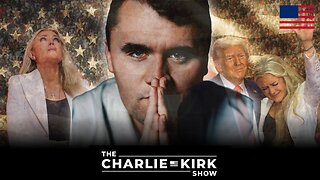 1:58:55
1:58:55
The Charlie Kirk Show
7 hours agoThe Charlie Memorial Aftermath | Benny Johnson, Sortor, Brick Suit | 9.22.2025
200K189 -
 1:56:39
1:56:39
Right Side Broadcasting Network
8 hours agoLIVE REPLAY: White House Press Secretary Karoline Leavitt Holds a Press Briefing - 9/22/25
95.6K34 -
 57:37
57:37
MTNTOUGH Podcast w/ Dustin Diefenderfer
8 hours agoRebecca Rusch: The Queen of Pain's SHOCKING Secret to Mental Toughness | MTNPOD #134
1.98K -
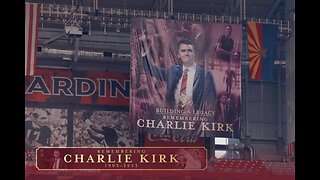 LIVE
LIVE
The Amber May Show
3 hours agoWorship, Honor, and Legacy: My Experience at Charlie Kirk’s Memorial
132 watching -
 LIVE
LIVE
Wayne Allyn Root | WAR Zone
3 hours agoWatch LIVE: The War Zone Podcast with Wayne Allyn Root
102 watching -
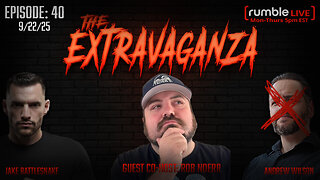 1:03:35
1:03:35
TheCrucible
2 hours agoThe Extravaganza! EP: 40 (9/22/25)
120K5 -
 DVR
DVR
Kim Iversen
2 hours agoLiterally NO ONE Believes Official Charlie Kirk Assassination Narrative
16.8K44 -
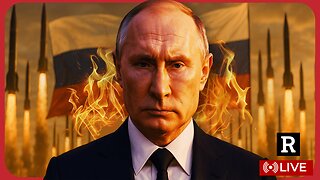 1:45:41
1:45:41
Redacted News
3 hours agoHIGH ALERT! Putin Moves Missiles to Belarus & warns NATO "I'm done talking", NATO panics | Redacted
153K103 -
 3:01:09
3:01:09
Right Side Broadcasting Network
7 hours agoLIVE REPLAY: Pres. Trump Makes Announcement on Significant Medical Findings for American Children - 9/22/25
149K65